Related Research Articles

Drawing is a visual art that uses an instrument to mark paper or another two-dimensional surface. The instrument might be pencils, crayons, pens with inks, brushes with paints, or combinations of these, and in more modern times, computer styluses with graphics tablets.

Goldsmiths, University of London, legally the Goldsmiths' College, is a constituent research university of the University of London in England. It was originally founded in 1891 as The Goldsmiths' Technical and Recreative Institute by the Worshipful Company of Goldsmiths in New Cross, London. It was renamed Goldsmiths' College after being acquired by the University of London in 1904, and specialises in the arts, design, computing, humanities and social sciences. The main building on campus, known as the Richard Hoggart Building, was originally opened in 1792 and is the site of the former Royal Naval School.

Zeuxis was a Greek painter who flourished during the 5th century BCE and became famous for his ability to imitate nature and especially still life with his art.

The Aristotle University of Thessaloniki is the second oldest tertiary education institution within Greece. Named after the philosopher Aristotle, who was born in Stageira, about 55 km east of Thessaloniki, it is the largest university in Greece and its campus covers 230,000 square metres in the centre of Thessaloniki, with additional educational and administrative facilities elsewhere.
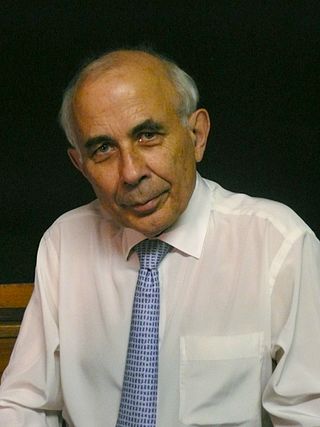
Semir Zeki FMedSci FRS is a British and French neurobiologist who has specialised in studying the primate visual brain and more recently the neural correlates of affective states, such as the experience of love, desire and beauty that are generated by sensory inputs within the field of neuroesthetics. He was educated at University College London (UCL) where he was Henry Head Research Fellow of the Royal Society before being appointed Professor of Neurobiology. Since 2008 he has been Professor of Neuroesthetics at UCL.

Neuroesthetics is a relatively recent sub-discipline of applied aesthetics. Empirical aesthetics takes a scientific approach to the study of aesthetic experience of art, music, or any object that can give rise to aesthetic judgments. Neuroesthetics is a term coined by Semir Zeki in 1999 and received its formal definition in 2002 as the scientific study of the neural bases for the contemplation and creation of a work of art. Neuroesthetics uses neuroscience to explain and understand the aesthetic experiences at the neurological level. The topic attracts scholars from many disciplines including neuroscientists, art historians, artists, art therapists and psychologists.

Norwich University of the Arts is a public university in Norwich, Norfolk, United Kingdom that specialises in art, design and media. It was founded as Norwich School of Design in 1845 and has a long history of arts education. It gained full university status in 2013.
The theory of a biological basis of love has been explored by such biological sciences as evolutionary psychology, evolutionary biology, anthropology and neuroscience. Specific chemical substances such as oxytocin are studied in the context of their roles in producing human experiences, emotions and behaviors that are associated with love.
John Langdon is an American graphic designer, ambigram artist, painter, and writer. Langdon has been a freelance artist specializing in logos, type, and lettering since 1977. He retired from teaching in Drexel University's graphic design program in November 2015 after 27 years of service.
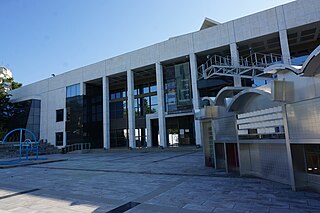
The Teloglion Fine Arts Foundation was established in Thessaloniki, Central Macedonia, Greece in 1972. It was named after Nestor and Aliki Telloglou, who donated their art collection and their entire property to the Aristotle University of Thessaloniki. Later the university established this foundation in order to house the art collection and make it available to the public.
John B Onians, FSA is Professor Emeritus of World Art at the University of East Anglia, Norwich and specialised in architecture, especially the architectural theory of the Italian Renaissance; painting, sculpture and architecture in Ancient Greece and Rome; Byzantine art, material culture, metaphor and thought; perception and cognition, and the biological basis of art. His recent work has been instrumental in the establishment of Neuroarthistory as a distinct set of methodologies.

Michael Pearce is an English, California-based figurative painter and author.

Mathematical beauty is the aesthetic pleasure derived from the abstractness, purity, simplicity, depth or orderliness of mathematics. Mathematicians may express this pleasure by describing mathematics as beautiful or describe mathematics as an art form, or, at a minimum, as a creative activity.
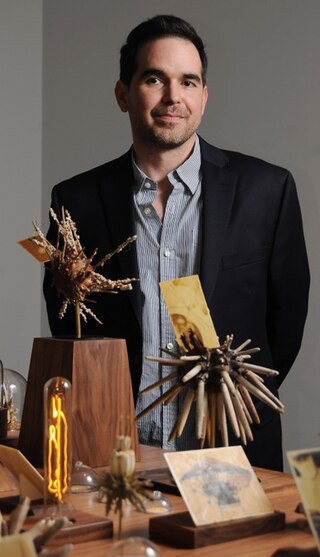
Dario Robleto is an American transdisciplinary artist, researcher, writer, teacher, and “citizen-scientist”. His research-driven practice results in intricately handcrafted objects that reflect his exploration of music, popular culture, science, war, and American history.
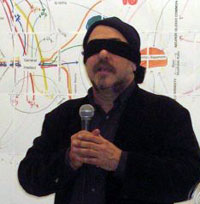
Warren Neidich is an American artist who lives in Berlin and Los Angeles. He was a professor at Kunsthochschule Weißensee School of Art, Berlin and visiting scholar at Otis College of Art and Design, Los Angeles.

De pictura is a treatise or commentarii written by the Italian humanist and artist Leon Battista Alberti. The first version, composed in Latin in 1435, was not published until 1450. It is one of his three treatises on art; the other two are De statua and De re aedificatoria, that would form the Renaissance concept for the fine arts: painting, sculpture, and architecture.
Martin Harrison is a British art historian, author and curator, noted for his work on photography, on the medium of stained glass and its history, and as an authority on the work of the painter Francis Bacon.
Colin Gardner is a British film and media studies theorist living in Santa Barbara, California.
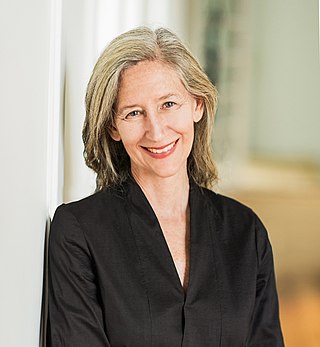
Susan Huganir Magsamen is an American academic, author and entrepreneur. She serves as executive director of the International Arts + Mind Lab, part of the Brain Science Institute at the Johns Hopkins School of Medicine. She also co-directs the Aspen Institute's NeuroArts BluePrint. She is a Fellow of the Royal Society of Arts and the creator of Impact Thinking, an interdisciplinary research model that combines the arts, science and health. Susan is the co-author of the New York Times bestselling book Your Brain on Art: How the Arts Transform Us with Ivy Ross. This book shares the science behind humanities birthright - to make and behold art and its power to amplify physical and mental health, learning and build stronger communities.
Massimiliano (Max) Garagnani is a University Professor at the University of London, and is primarily known for his work on bio-plausible neural network models that closely mimic the structure, connectivity, and physiology of the human cortex. Garagnani presently runs the Goldsmith Computational Cognitive Neuroscience Postgraduate Programme at the University of London, and further serves as a visiting researcher at the Free University of Berlin.
References
- ↑ Genn, Robert (2006-09-26). "Neuroarthistory". The Painter's Keys. Archived from the original on 2008-07-19. Retrieved 2007-11-07.
- ↑ Zeki, Semir (June 1999). "Art and the Brain". Journal of Consciousness Studies. 6 (7): 76–97.
- ↑ "'Neuroarthistory' to probe the palaeolithic mind & cognitive evolution". Neurophilosophy. 2006-09-07. Retrieved 2007-11-07.
- ↑ Onians J (2005) Neuroarthistory: First Principles (A paper presented at the Neuroaesthetics Conference Goldsmith Conference May 2005).
- ↑ Arnold, Marion (February 2007). "Research, Publishing and Conferences". The Art Book. Blackwell Publishing. 14 (1): 74–75. doi:10.1111/j.1467-8357.2007.00784.x.
- 1 2 3 "Cracking the real Da Vinci Code" (Press release). University of East Anglia. 2006-09-06. Retrieved 2007-11-07.
- ↑ Boddy-Evans, Marion. "Neuroarthistory". Art Glossary. About, Inc. Retrieved 2007-11-07.
- ↑ Onians, John (2008-03-28). Neuroarthistory: From Aristotle and Pliny to Baxandall and Zeki. Yale University Press. ISBN 978-0-300-12677-8.
- ↑ "Neuroarthistory? What's next..." Sci@Night. 2006-09-06. Retrieved 2007-11-07.[ permanent dead link ]